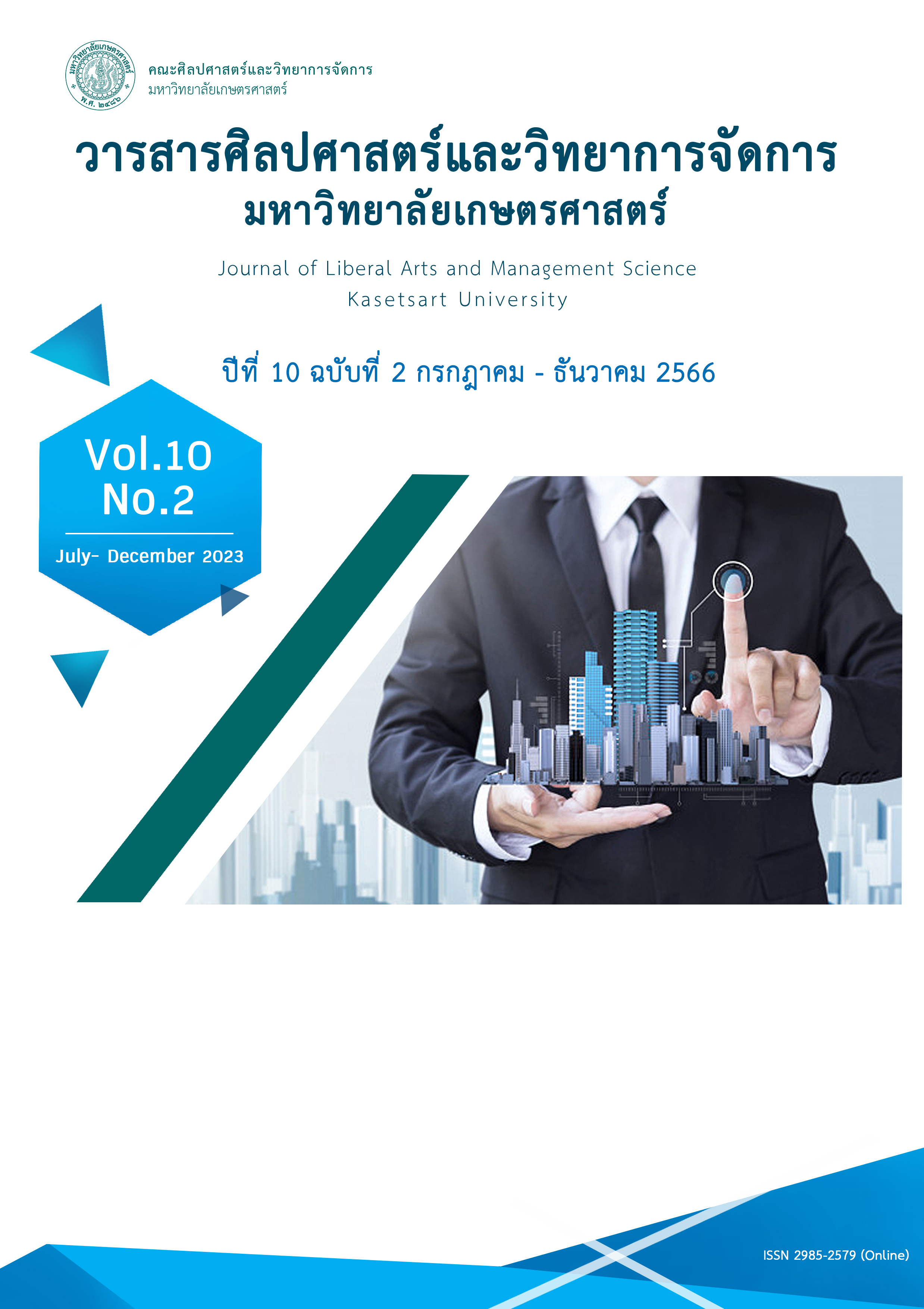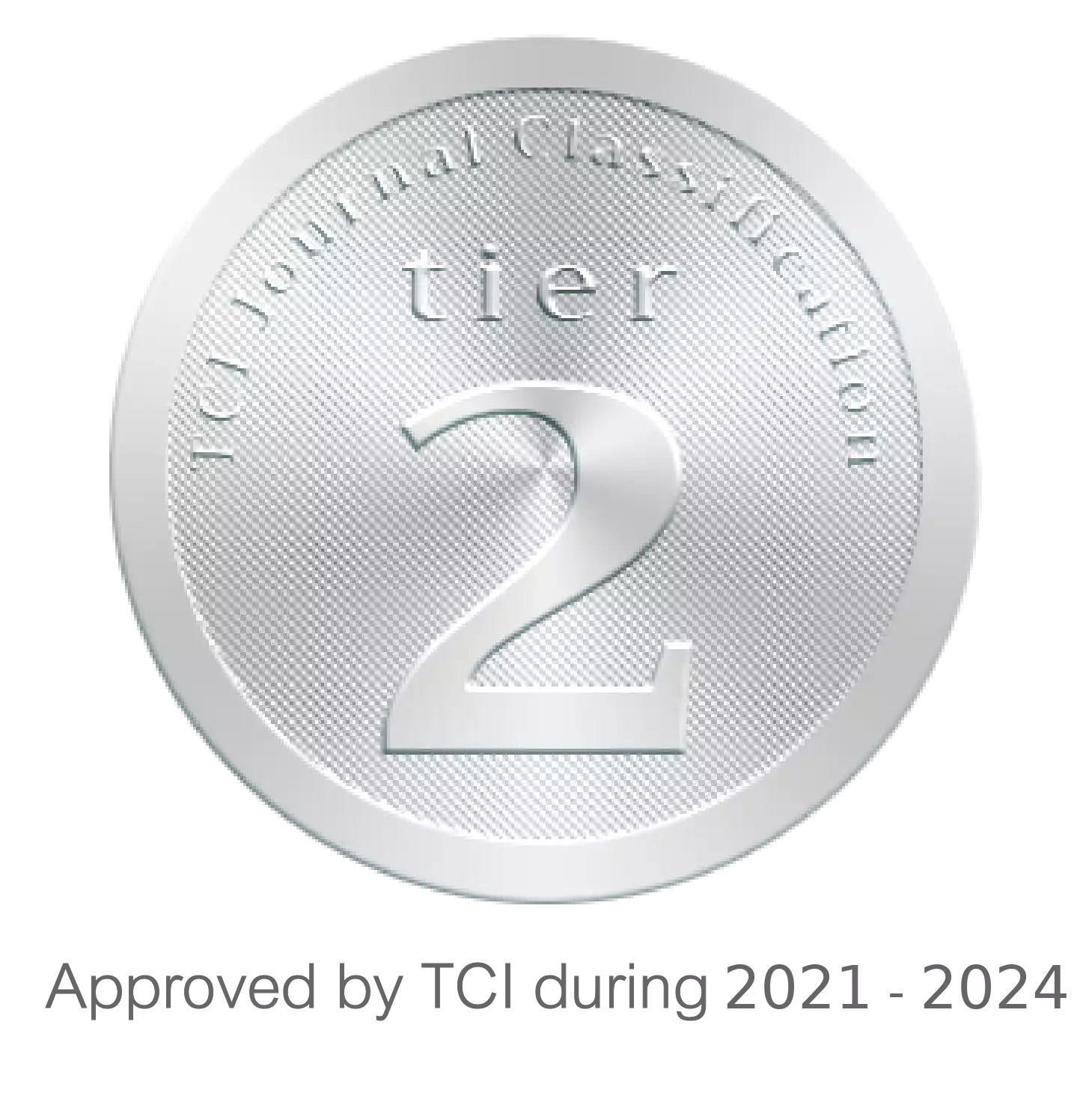EMOTIONAL RESPONSES OF PRODUCT PLACEMENT ON KOREAN DRAMA: A CASE STUDY OF BEAUTY PRODUCT PURCHASE DECISION AMONG GENERATION Z
Keywords:
brand-drama congruence, brand familiarity, emotional response, purchase decision, product placement, Korean dramasAbstract
This research aimed to study factors that affected the emotional response toward product placement in Korean dramas and the purchase decision of beauty products. The surveyed samples comprised 420 Generation Z users aged between 18 and 25, and data were gathered through online questionnaires. The collected data analyzed using descriptive statistics, and hypotheses were tested through inferential statistics. The results of the empirical study showed that Brand-drama congruence and Brand familiarity affected the purchase decision of beauty products. The emotional response also affects the purchase decision of beauty products. This study also examined the direct and indirect effects of Brand-drama congruence and Brand familiarity toward the purchase decision of beauty products via the emotional response as a mediator. The results showed the mediator affected the purchase decision of beauty products. The study provided additional guidance for marketers and entrepreneurs to plan the beauty’s product placement by following the behaviors and needs of the Generation Z group by designing the content of product placements that are congruent with the drama’s content, creating brand familiarity and developing drama’s product placement strategies to have the consumers positively emotionally responded.
Downloads
References
กัลยา วานิชย์บัญชา. (2554). สถิติสำหรับงานวิจัย (พิมพ์ครั้งที่ 6). กรุงเทพมหานคร: ธรรมสาร.
วรกร คุรุวงศ์วัฒนา. (2564). การศึกษาการรับรู้และจดจำโฆษณาแฝงประเภทน้ำแร่ในละครซิทคอมของกลุ่ม Generation X (วิทยานิพนธ์ปริญญาการจัดการมหาบัณฑิต). มหาวิทยาลัยมหิดล.
ศิริกุล สัมฤทธิ์นันท์. (2562). ความสัมพันธ์ระหว่างภาพลักษณ์ตราสินค้ากับพฤติกรรมการซื้อเครื่องสำอางเกาหลีของผู้บริโภคในกรุงเทพมหานคร (การศึกษาค้นคว้าอิสระปริญญาบริหารธุรกิจมหาบัณฑิต). มหาวิทยาลัยเทคโนโลยีราชมงคลกรุงเทพ.
ศิริวรรณ เสรีรัตน์. (2541). การบริหารการตลาดยุคใหม่. กรุงเทพมหานคร: ธีระฟิลม์และไทเท็กซ์.
สำนักบริหารการทะเบียน กรมการปกครอง. (2565). สถิติประชากรทางการทะเบียนราษฎร. สืบค้นเมื่อ 20 กันยายน 2566, จาก https://stat.bora.dopa.go.th/stat/statnew/statMONTH/statmonth/#/displayData
สุมิตรา ดีธรรม. (2561). การรับรู้การสื่อสารทางการตลาดผ่านเครือข่ายสังคมออนไลน์เฟซบุ๊กที่มีผลต่อความภักดีของผลิตภัณฑ์เครื่องสำอางลอรีอัล (วิทยานิพนธ์บริหารธุรกิจมหาบัณฑิต). มหาวิทยาลัยรังสิต.
เสรี วงษ์มณฑา. (2548). หลักการโฆษณา. กรุงเทพมหานคร: ธรรมสาร.
Advincula, B. A., Bernardo, M., & Soriano, A. N. (2021). Measuring the influence of product placements in Korean dramas on the act of purchase of Filipino audiences. Journal of Business and Management Studies, 3(2), 268-275.
Augusta, E. D., Mardhiyah, D., & Widiastuti, T. (2019). Effect of country-of-origin image, product knowledge, brand familiarity to purchase intention Korean cosmetics with information seeking as a mediator variable: Indonesian women’s perspective. Dermatology Reports, 11(s1), 7-10.
Baron, R. M., & Kenny, D. A. (1986). The moderator–mediator variable distinction in social psychological research: Conceptual, strategic, and statistical considerations. Journal of personality and social psychology, 51(6), 1173.
Belch, G. E., & Belch, M. A. (2015). Advertising & promotion: An integrated marketing communications perspective (10th ed.). New York: McGraw-Hill Education.
Blackwell, R. D., Miniard, P. W., & Engel, J. F. (2001). Consumer behavior (9th ed.). Texas: Harcourt College.
Campbell, M. C., & Keller, K. L. (2003). Brand familiarity and advertising repetition effects. Journal of consumer research, 30(2), 292-304.
Cauberghe, V., & De Pelsmacker, P. (2010). The effectiveness of telescopic ads delivered via interactive digital television: The impact of the amount of information and the level of interactivity on brand responses. Journal of Interactive Marketing, 24(4), 297-308.
Cheon, M., Ahn, Y., Mo, J. H., & Park, J. S. (2016). Product-story congruence and actor attractiveness in product placements in television drama. Journal of Fashion Business, 20(3), 104-118.
Chernikova, A., & Branco, M. (2019). Product placement in computer/video games: An analysis of the impact on customers purchasing decision. Innovative Marketing, 15(3), 60.
Choi, S. M., & Rifon, N. J. (2012). It is a match: The impact of congruence between celebrity image and consumer ideal self on endorsement effectiveness. Psychology & marketing, 29(9), 639-650.
Cochran, W. G. (1977). Sampling techniques (3rd ed.). New York: John Wiley & Sons.
Consoli, D. (2009). Emotions that influence purchase decisions and their electronic processing. Annales Universitatis Apulensis Series Oeconomica, 11(2), 996-1008.
Consoli, D. (2010). A new concept of marketing: The emotional marketing. BRAND. Broad Research in Accounting, Negotiation, and Distribution, 1(1), 52-59.
Franzak, F., Makarem, S., & Jae, H. (2014). Design benefits, emotional responses, and brand engagement. Journal of Product & Brand Management, 23(1), 16-23.
Gürses, I. Ö. A., & Okan, E. Y. (2014). Effectiveness of product placement: An experimental study in Turkey. Canadian Social Science, 10(1), 56.
Hadinejad, A., Moyle, B. D., Scott, N., & Kralj, A. (2019). Emotional responses to tourism advertisements: the application of FaceReader™. Tourism Recreation Research, 44(1), 131-135.
Halim, T. M., & Kiatkawsin, K. (2021). Beauty and celebrity: Korean entertainment and its impacts on female Indonesian viewers’ consumption intentions. Sustainability, 13(3), 1405. https://doi.org/10.3390/su13031405
Hosany, S. (2012). Appraisal determinants of tourist emotional responses. Journal of travel Research, 51(3), 303-314.
Hosany, S., & D. Gilbert. (2010). Measuring tourists’ emotional experiences toward hedonic holiday destinations. Journal of Travel Research, 49(4), 513-26.
Huber, F., Eisele, A., & Meyer, F. (2018). The role of actual, ideal, and ought self‐congruence in the consumption of hedonic versus utilitarian brands. Psychology & Marketing, 35(1), 47-63.
Hyun, S. S., Kim, W., & Lee, M. J. (2011). The impact of advertising on patrons’ emotional responses, perceived value, and behavioral intentions in the chain restaurant industry: The moderating role of advertising-induced arousal. International Journal of Hospitality Management, 30(3), 689-700.
Ju, H. (2020). Korean TV drama viewership on Netflix: Transcultural affection, romance, and identities. Journal of international and intercultural communication, 13(1), 32-48.
Jung, J., & Hwang, C. S. (2016). Associations between attitudes toward cosmetic surgery, celebrity worship, and body image among South Korean and US female college students. Fashion and Textiles, 3(1), 1-14.
Kent, R. J., & Allen, C. T. (1994). Competitive interference effects in consumer memory for advertising: The role of brand familiarity. Journal of Marketing, 58(3), 97-105.
Kim, J., Choi, D., & Kim, H. (2019). Advertising nativeness as a function of content and design congruence. International Journal of Advertising, 38(6), 845-866.
Korean Culture and Information Centre. (2016). Contemporary Korean No.1 The Korean Wave: A New Pop Culture Phenomenon. Retrieved 20 September 2023, from https://www.ditp.go.th/contents _attach/154036/154036.docx
Kotler, P., & Keller, K. L. (2012). Marketing management (14th ed). England: Pearson.
Krishnan, H. S. (1996). Characteristics of memory associations: A consumer-based brand equity perspective. International Journal of research in Marketing, 13(4), 389-405.
Lee, M. J. (2020). Touring the land of romance: Transnational Korean television drama consumption from online desires to offline intimacy. Journal of Tourism and Cultural Change, 18(1), 67-80.
Liu, Z., Pan, D., & Xu, Y. (2019). The effect of drama types and brand familiarity on brand attitude in brand placement. American Journal of Industrial and Business Management, 9(3), 491-502.
Machleit, K. A., & Wilson, R. D. (1988). Emotional feelings and attitude toward the advertisement: The roles of brand familiarity and repetition. Journal of advertising, 17(3), 27-35.
Mau, G., Silberer, G., & Constien, C. (2008). Communicating brands playfully: Effects of in-game advertising for familiar and unfamiliar brands. International Journal of Advertising, 27(5), 827-851.
Merchant, A., & Rose, G. M. (2013). Effects of advertising evoked vicarious nostalgia on brand heritage. Journal of Business Research, 66(12), 2619-2625.
Middelesch, T. (2017). Instagram, advertising on a level playing field? The effect of brand familiarity and advertisement vividness (Master's thesis). University of Twente.
Nugroho, S. D. P., Rahayu, M., & Hapsari, R. D. V. (2022). The impacts of social media influencer’s credibility attributes on gen Z purchase intention with brand image as mediation: Study on consumers of Korea cosmetic product. International Journal of Research in Business and Social Science, 11(5), 18-32.
Puccinelli, N. M., Goodstein, R. C., Grewal, D., Price, R., Raghubir, P., & Stewart, D. (2009). Customer experience management in retailing: Understanding the buying process. Journal of retailing, 85(1), 15-30.
Radha, G., & Jija, P. (2013). Influence of celebrity endorsement on the consumer's purchase decision. International journal of scientific and research publications, 3(11), 1-28.
Sitorus, R. X., Mani, L., Oktiano, D., & Amalia, Y. (2023). Influence of Indonesian product placement in Koream drama series to buy interest through brand familiarity as a mediator. Jurnal Darma Agung, 31(1), 932-942.
Steenkamp, J. B., Batra, R., & Alden, D. L. (2003). How perceived brand globalness creates brand value. Journal of international business studies, 34, 53-65.
TNP. (2022). Marketing Research the beauty market in Thailand. Retrieved 20 September 2023, from https://www.tnpoem.com/content/6295/marketing-research
Trazy. (2020). Must-Have Korean Cosmetics in K-Dramas 2019-2020. Retrieved 20 September 2023, from https://blog.trazy.com/must-have-korean-cosmetics-in-k-dramas/
Urban Creature. (2020). “Entertainment Industry” The mainstay of the Korean economy, a punch from the government. Retrieved 20 September 2023, from https://urbancreature.co/southkorea-koreanwave/
Visinescu, L. L., Sidorova, A., Jones, M. C., & Prybutok, V. R. (2015). The influence of website dimensionality on customer experiences, perceptions, and behavioral intentions: An exploration of 2D vs. 3D web design. Information & Management, 52(1), 1-17.









